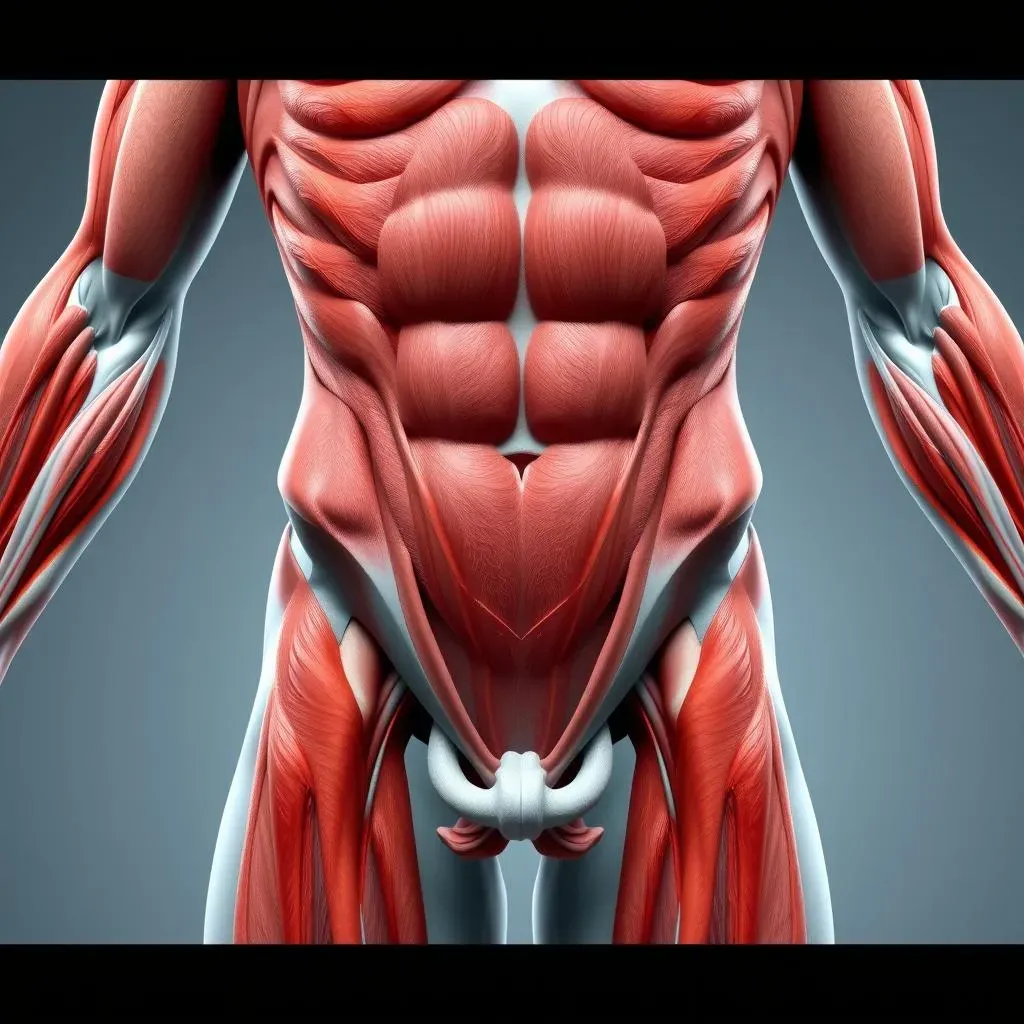Table of Contents
Forget endless crunches! If you're a man looking to carve a stronger, more defined core, it's time to grab a kettlebell. Kettlebell core exercises for men offer a dynamic and effective way to engage your entire midsection, building not just visible abs, but also functional strength and stability. Unlike traditional exercises that isolate specific muscles, kettlebell movements force your core to work as a unit, improving balance, coordination, and power.
Unlock a Stronger Core: The Benefits of Kettlebell Core Exercises for Men

Unlock a Stronger Core: The Benefits of Kettlebell Core Exercises for Men
Why Kettlebells Are a Game Changer
Let's be real, guys. We all want that chiseled six-pack, but the benefits of a strong core go way beyond aesthetics. A powerful core is the foundation for everything – from crushing your deadlifts to preventing back pain. And that's where kettlebell core exercises for men come in. They're not just another trendy workout; they're a complete game changer. Kettlebells force your body to stabilize and control weight in unique ways, activating more core muscles than traditional exercises ever could.
Beyond the Six-Pack: Functional Strength
Think about it: when you're doing a kettlebell swing, your core is constantly engaged to keep you balanced and prevent rotation. This translates to real-world strength and stability. You'll notice improvements in your posture, balance, and overall athletic performance. You'll be able to lift heavier, run faster, and move with more confidence.
It's about building a core that's not just for show, but one that actually supports your body and enhances your life.
Engaging Type-II Muscle Fibers for Growth
Want to stimulate muscle growth in your core? Kettlebells can help with that too! The dynamic, explosive movements involved in many kettlebell core exercises for men engage Type-II muscle fibers, which are responsible for strength and hypertrophy. This means you can actually build muscle in your core, leading to a more defined and powerful physique.
Plus, the added weight of the kettlebell provides progressive overload, constantly challenging your muscles to adapt and grow stronger.
Benefit | Description |
|---|---|
Enhanced Stability | Kettlebells improve balance and coordination by engaging stabilizer muscles. |
Functional Strength | Exercises mimic real-world movements, improving overall athleticism. |
Muscle Growth | Dynamic movements engage Type-II muscle fibers, promoting hypertrophy. |
10 MustTry Kettlebell Core Exercises for Men: Build Strength and Stability

10 MustTry Kettlebell Core Exercises for Men: Build Strength and Stability
Kettlebell Turkish Get-Up: The Ultimate Full-Body Challenge
Alright, listen up! If you want to test your core strength, stability, and coordination all at once, the Turkish Get-Up is your go-to exercise. Seriously, this move is a beast, but it's worth every ounce of effort. It's not just a core exercise; it's a full-body movement that requires focus and control. Start with a light kettlebell, or even just your bodyweight, until you nail the technique.
So, how do you do it? Lie on your back with the kettlebell in one hand, arm extended towards the ceiling. Bend the knee on the same side as the kettlebell. Now, the fun begins: roll onto your opposite forearm, then push up to a seated position. From there, get into a kneeling lunge, and finally, stand up. Reverse the steps to return to the starting position. That's one rep! Aim for 3-5 reps per side. Trust me, you'll feel this one tomorrow.
Pro Tip: Break the movement down into smaller steps and master each one before moving on.
Double Kettlebell Squat: Strength and Stability Under Load
Squats are a fundamental exercise, but adding kettlebells takes them to a whole new level for your core. Holding two kettlebells in the front rack position (at your chest) forces your core to work overtime to maintain an upright posture and prevent you from collapsing forward. This not only strengthens your abs and obliques but also improves your overall squatting form and power.
To perform the double kettlebell squat, grab two kettlebells and hold them in the front rack position, elbows tucked in close to your body. Stand with your feet shoulder-width apart, toes slightly pointed out. Now, squat down as low as you can while maintaining a straight back and keeping your chest up. Push through your heels to return to the starting position. Aim for 3 sets of 8-12 reps. Your core will be screaming!
Exercise | Benefits | Sets/Reps |
|---|---|---|
Kettlebell Turkish Get-Up | Full-body coordination, core stability | 3-5 reps per side |
Double Kettlebell Squat | Core strength, improved squat form | 3 sets of 8-12 reps |
Anatomy of the Core: Understanding the Muscles Targeted by Kettlebell Exercises

Anatomy of the Core: Understanding the Muscles Targeted by Kettlebell Exercises
The Rectus Abdominis: More Than Just a Six-Pack
let's get one thing straight. The rectus abdominis is more than just those superficial "six-pack" muscles you see on magazine covers. Sure, it's responsible for that coveted look, but its primary function is to flex your spine, like when you're doing a crunch. Kettlebell exercises, especially those that involve a lot of spinal flexion and extension, like sit-ups or dead bug pullovers, can really target this muscle group.
But here's the thing: you can't just focus on the rectus abdominis and expect a strong core. It's just one piece of the puzzle. You need to work all the muscles that surround and support your spine to build a truly functional and resilient core.
Obliques: The Key to Rotational Power and Stability
Now, let's talk about the obliques. These muscles run along the sides of your torso and are responsible for rotation, lateral flexion (bending to the side), and resisting rotation. Kettlebell exercises like the windmill, suitcase carry, and single-arm swings are fantastic for targeting the obliques. They force your core to stabilize against rotational forces, building strength and stability in all planes of motion.
Think about it: when you're doing a single-arm kettlebell swing, your obliques are working overtime to prevent you from twisting. This not only strengthens your core but also improves your balance and coordination. Plus, a strong set of obliques can help you generate more power in rotational movements, like throwing a punch or swinging a golf club.
Transverse Abdominis and Hip Flexors: The Unsung Heroes of Core Strength
Last but not least, we have the transverse abdominis (TVA) and the hip flexors. The TVA is the deepest abdominal muscle, and it acts like a natural weightlifting belt, providing stability and support for your spine. Kettlebell exercises that require you to maintain a neutral spine, like the plank or dead bug, are great for engaging the TVA. The TVA is also responsible for forced expiration as well as increasing intra-abdominal pressure.
The hip flexors, which include the psoas and iliacus, are often overlooked in core training, but they play a vital role in stabilizing the spine and controlling hip movement. Kettlebell exercises that involve hip flexion, like the Turkish Get-Up or kettlebell sit-ups, can help strengthen these muscles. Remember, a strong core is a balanced core, so don't neglect these often-overlooked muscles!
Muscle Group | Function | Kettlebell Exercises |
|---|---|---|
Rectus Abdominis | Spinal Flexion | Kettlebell Sit-Ups, Dead Bug Pullovers |
Obliques | Rotation, Lateral Flexion | Kettlebell Windmill, Suitcase Carry, Single-Arm Swings |
Transverse Abdominis | Spinal Stability | Plank, Dead Bug |
Hip Flexors | Hip Flexion | Turkish Get-Up, Kettlebell Sit-Ups |
Why Kettlebells? The Advantages of Kettlebell Training for Core Strength in Men

Why Kettlebells? The Advantages of Kettlebell Training for Core Strength in Men
Unstable = Unstoppable: The Instability Factor
so why kettlebells? What makes them so special for core training? It all comes down to instability. Unlike dumbbells or barbells, kettlebells have an offset center of gravity. This means your core has to work harder to control the weight and maintain balance. Every exercise becomes a core exercise when you're using a kettlebell. It's like your core is constantly firing, bracing, and adjusting to keep you from tipping over.
This constant engagement not only strengthens your core muscles but also improves your proprioception – your body's awareness of its position in space. This is crucial for preventing injuries and improving overall athletic performance. You'll move better, feel more stable, and be less likely to get hurt.
3D Core Training: Moving in All Planes
Traditional core exercises like crunches and planks primarily work your core in one plane of motion – flexion and extension. But real-life movements happen in all three planes: sagittal (forward and backward), frontal (side to side), and transverse (rotational). Kettlebell exercises, on the other hand, force your core to work in all three dimensions. Think about the kettlebell swing – it involves hip hinge (sagittal), anti-rotation (transverse), and lateral stability (frontal). This 3D core training is what makes kettlebells so effective for building functional strength and stability.
Plus, the dynamic nature of kettlebell exercises engages more muscle fibers than static exercises like planks. This means you'll not only build strength but also improve your power and endurance. You'll be able to move faster, jump higher, and last longer.
Grip Strength = Core Strength: The Grip Connection
Here's something you might not have considered: your grip strength is directly related to your core strength. When you're gripping a heavy kettlebell, your entire body tenses up, including your core muscles. This is because your nervous system is trying to create stability throughout your body. The stronger your grip, the more tension you can create, and the more stable you'll be. Kettlebell exercises are fantastic for improving grip strength, which in turn will enhance your core strength and overall lifting performance.
So, if you're looking for a way to kill two birds with one stone, kettlebell training is the answer. You'll strengthen your core, improve your grip, and build a more resilient and functional body.
Advantage | Description |
|---|---|
Instability | Forces core to work harder for balance and control. |
3D Movement | Engages core in all planes of motion for functional strength. |
Grip Strength | Improves grip, enhancing core stability and overall lifting performance. |
Sample Kettlebell Core Workout: A Circuit to Sculpt Your Abs and Strengthen Your Core

Sample Kettlebell Core Workout: A Circuit to Sculpt Your Abs and Strengthen Your Core
Alright, let's put all this knowledge into action! This sample kettlebell core workout is designed to hit all the major core muscles, improve your stability, and leave you feeling like a total badass. It's a circuit, which means you'll perform each exercise one after the other with minimal rest, then repeat the entire circuit for a set number of rounds. This will not only strengthen your core but also improve your cardiovascular fitness. Before starting, make sure you've warmed up properly with some dynamic stretches and light cardio.
Remember to choose a kettlebell weight that challenges you but allows you to maintain good form throughout the entire workout. It's better to start lighter and gradually increase the weight as you get stronger. Listen to your body and don't push yourself too hard, especially if you're new to kettlebell training. Proper form is key to preventing injuries and maximizing results.
Exercise | Reps | Rest |
|---|---|---|
Kettlebell Turkish Get-Up | 3 per side | 30 seconds |
Double Kettlebell Squat | 8-12 | 30 seconds |
Single-Arm Kettlebell Swing | 10 per side | 30 seconds |
Kettlebell Windmill | 5 per side | 30 seconds |
Plank with Kettlebell Drag | 5 per side | 60 seconds |
Perform 3-4 rounds of this circuit, resting 1-2 minutes between rounds. As you get stronger, you can increase the number of rounds, the weight of the kettlebell, or the difficulty of the exercises. The goal is to constantly challenge your core and keep it adapting.
Conclusion: Kettlebell Core Exercises for Men - Your Path to a Stronger Core
Incorporating kettlebell core exercises for men into your training regimen is a game-changer for developing comprehensive core strength. These exercises not only target the superficial abdominal muscles for aesthetic appeal but also engage the deeper stabilizing muscles that are crucial for functional fitness and injury prevention. By mastering the movements outlined in this article and consistently challenging yourself with progressive overload, you'll unlock a new level of core power, improve your athletic performance, and enhance your overall quality of life. So, pick up that kettlebell and start sculpting a stronger, more resilient core today!